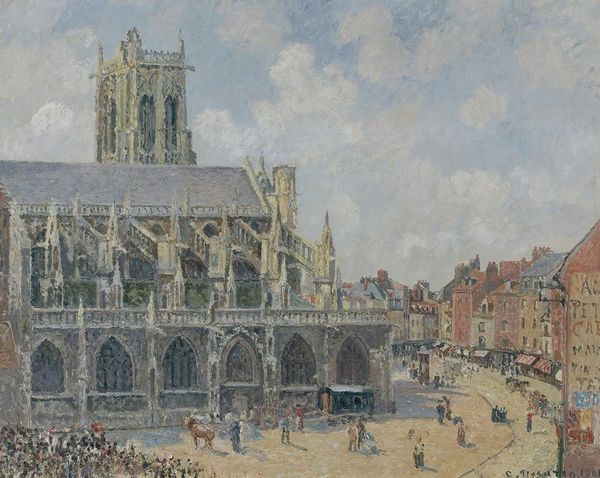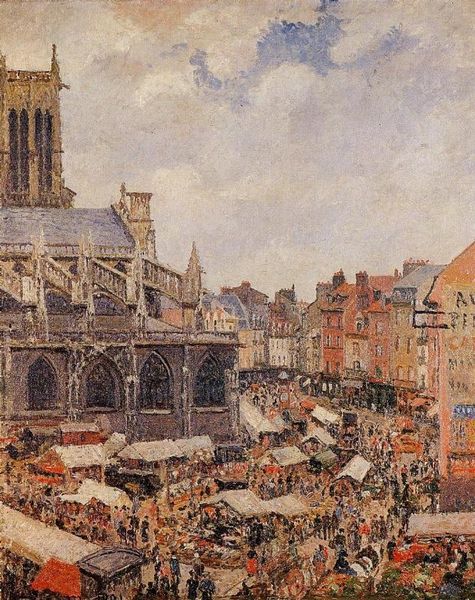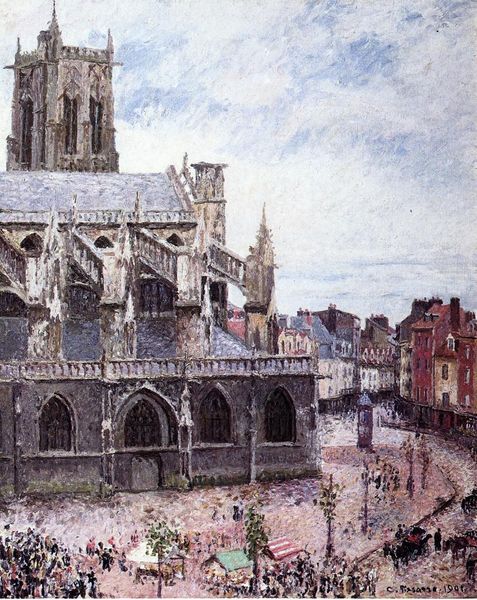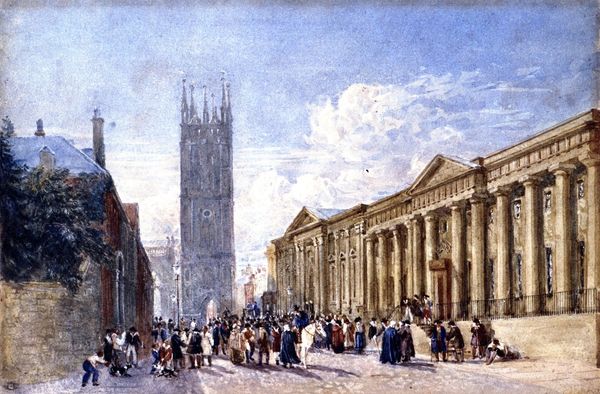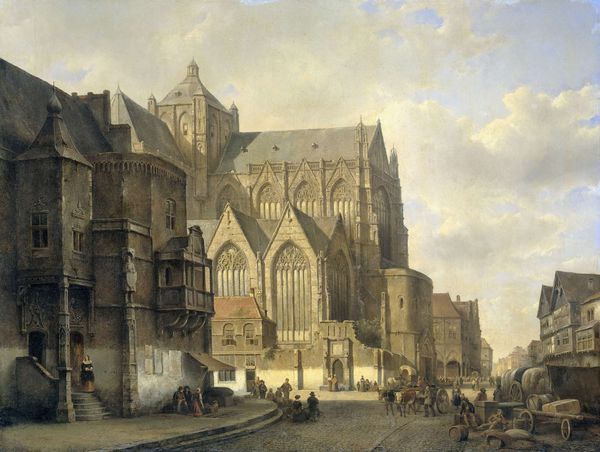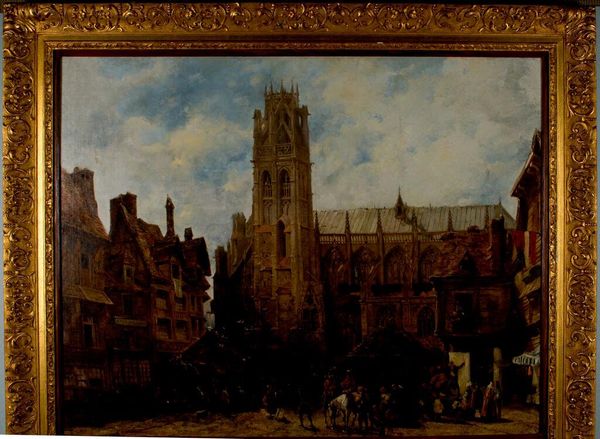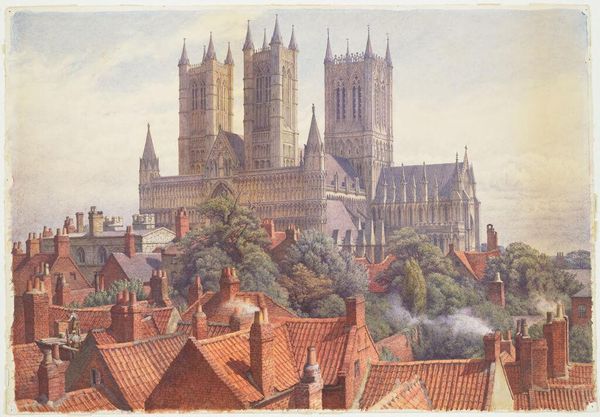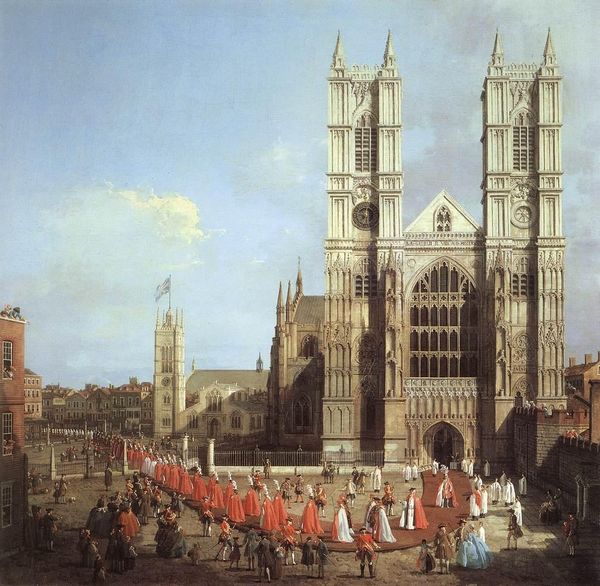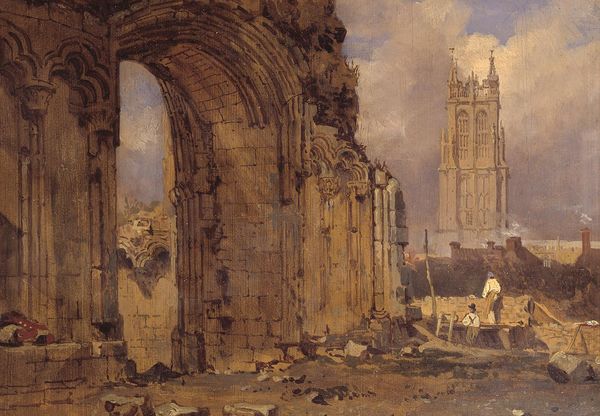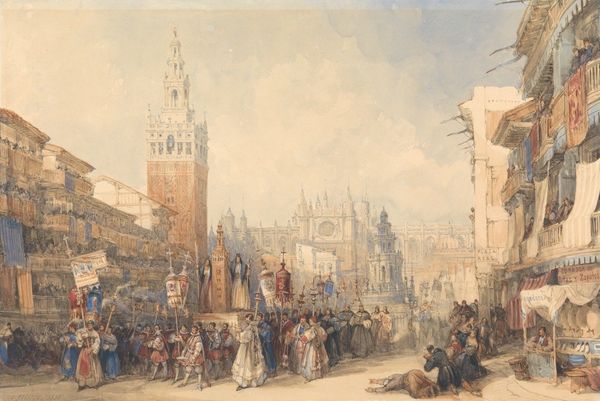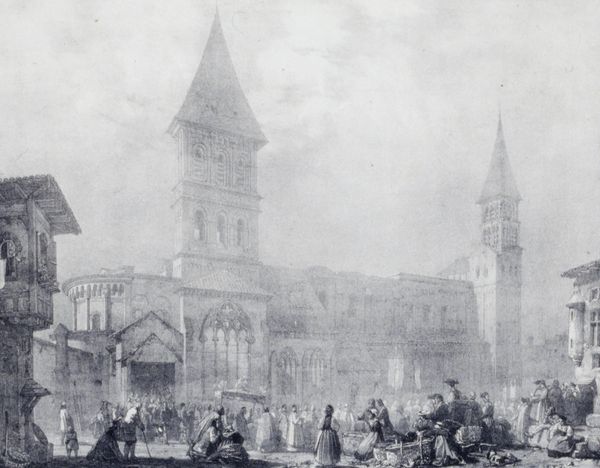
Dimensions: 73.5 x 92.5 cm
Copyright: Public domain
Curator: Pissarro's "The Fair by the Church of Saint Jacques, Dieppe," painted in 1901, depicts a bustling street scene. I am struck by the way Pissarro captures the effervescent atmosphere of the fair. It feels quite lively, even looking at it a century later. Editor: The hazy light and the broken brushstrokes are certainly key to achieving that effect. The canvas shows how he methodically constructed a visual experience rather than faithfully copying the visible world. Notice the contrast between the dense, active foreground, and the more solid geometry of the church and buildings. Curator: It’s not just a visual experience though, is it? It shows us the spectacle of leisure and consumption in late 19th century France. Consider the accessibility of this scene; it highlights the way fairs and markets brought communities together through shared experience and stimulated the local economy. The Church provides a solid backdrop of the scene. Editor: Interesting, but how can we move beyond this context? Look how Pissarro has captured this in paint, which offers insights beyond economic or social circumstance. Look at the layers; thick impasto and juxtaposed hues give an amazing visual feast to the eye. What would the work communicate to someone detached from this time and culture, relying solely on visual language? Curator: Maybe it’s about how that visual language reveals underlying power structures! He’s documenting a particular moment, using the fair as a stage to explore modern life and social interactions, revealing a burgeoning consumer culture as well as an ongoing faith in community. This piece illustrates leisure but it simultaneously questions the means of its production. Editor: Fair enough. It's an exceptional example of his urban landscapes, a scene viewed not directly from the ground, but observed and composed, lending the scene some order. Curator: Exactly, he offers not just a picturesque image but a considered analysis of society, labor and faith through art. Editor: True, so that structural underlay really creates some tensions that drive that point home.
Comments
No comments
Be the first to comment and join the conversation on the ultimate creative platform.
